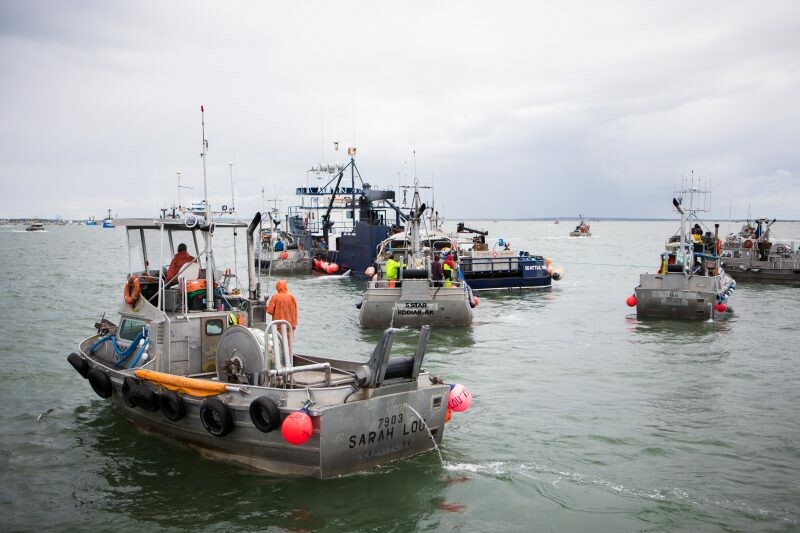As the calendar flipped over to May, salmon fishermen prepared shipments of non-perishable food, tools, clothing and other goods in large plywood crates for shipment from Seattle, Anchorage, Homer and other ports for King Salmon or Dillingham, the two mainstay ports in Bristol Bay.
While most fishermen won’t arrive in Bristol Bay for another few weeks, workers at processing companies meet the supply barges, take delivery of the wooden boxes and put them into warehouses for the eventual arrival of their owners.
Through the decades many Bristol Bay fishermen have taken full-time jobs and stack their precious vacation days to align with the peak of the run, which usually happens around July 1. When the run begins its peak the management strategy by the Alaska Department of Fish and Game is to open the fishery with 12-hour, emergency order periods that alternate throughout the week to ensure escapement of spawners into the rivers.
But for those with more flexible schedules the returning salmon and the management regime offers earlier opportunities to get in on the early part of the run. Longtime fishermen refer to weeklong regulatory openings before the emergency order management periods as “free week.”
In years when the fish haven’t yet arrived, gill netters make a lot of empty hauls as they prospect around in their favorite fishing spots. In some years, however, the Bay delivers an appreciable volume of early fish, and in some cases skippers have caught enough sockeyes to pay for the season’s operating expenses before the peak of the run even begins.
“I always hope to cover my expenses by the end of June, but it doesn’t always happen that way,” says Harry Moore, a longtime Bristol Bay drift fisherman who was raised set netting on the beach at Naknek. “Last year, free week just rolled right into a regular opening cycle and we had fish every opener. What a year!”
The regulatory openings vary among districts. On tap for 2023, ADF&G has predicted a total run of 49.7 million sockeyes. Subtracting the escapement goals from that run leaves a projected harvest of 36.7 million fish. As a trend, biologists have underestimated runs in recent years.
For the entire Naknek-Kvichak District drift and set gill net fishing will begin on Thursday, June 1, and end on Friday, June 23rd. In the Egegik District will run three days a week beginning June 1 and run through June 16, with additional fishing time after the 16th if the run appears abundant enough to keep fishing. Ugashik District will follow a similar schedule, from June 1 through June 23, and run strength indicators, such as harvest rate will determine subsequent fishing time. A previous restriction which limited gill netters to more than 48 hours between June 16 and June 23 will no longer be in effect.
In the Egegik District, the regulatory period begins on June 1 but runs on a schedule of three days per week through June 16, with additional fishing time in the works if run strength indicators point to a large volume of fish. The fabled Nushagak District has a potential harvest of 13.6 million sockeye, but its openings in June will be managed on escapement triggers of 420,000 fish passing by the sonar counters to the Nushagak River with another 800,000 to the Wood River. If the trigger goals aren’t met fishing will begin by emergency order after June 28.
The Togiak District, meanwhile, will be managed on a regulatory schedule of four days per week, based on reaching the midpoint escapement goal, which on the low end is 120,000 sockeyes with 270,000 fish on the high end.







